Museum
On Museum of History of Armenian Security Agencies
Museum of the History of Armenian Security Agencies was founded in 2006.
The aim of the Museum is the centralization and coordination of the historical documents evidencing achievements and breaking events in the history of Security Agencies in Armenia, as well as developing a basis for further scientific research on these documents.
Oath ceremonies of young and newly appointed officers of the NSS of RA, as well as other commemorative events come to pass in the Museum. the exhibits of the Museum are displayed in the following chronological order:
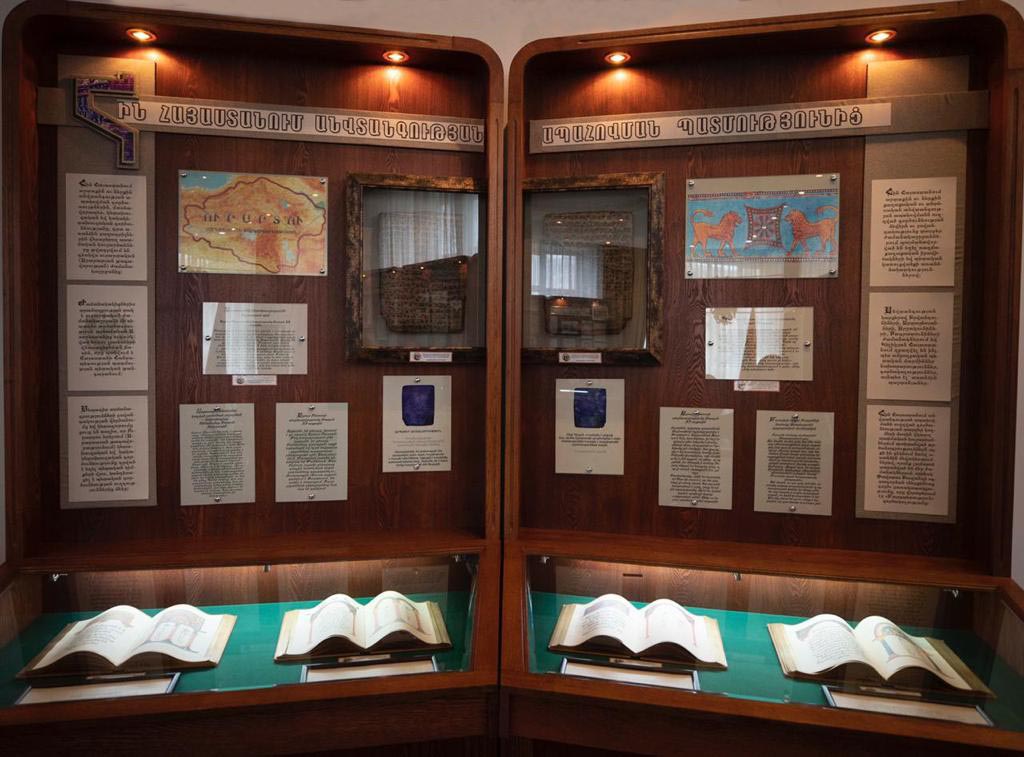 Information related to the agencies carrying out security functions in Old Armenia, historical evidence and quotations from the works of Armenian historiographers related to the security issues are presented in the showcase entitled ‘Ensuring Security in Old Armenia.’ The oldest displayed historical evidence is the cuneiform dating back to the period of the Kingdom of Van (7th century BC), which is a unique sample of intelligence report.
Information related to the agencies carrying out security functions in Old Armenia, historical evidence and quotations from the works of Armenian historiographers related to the security issues are presented in the showcase entitled ‘Ensuring Security in Old Armenia.’ The oldest displayed historical evidence is the cuneiform dating back to the period of the Kingdom of Van (7th century BC), which is a unique sample of intelligence report.
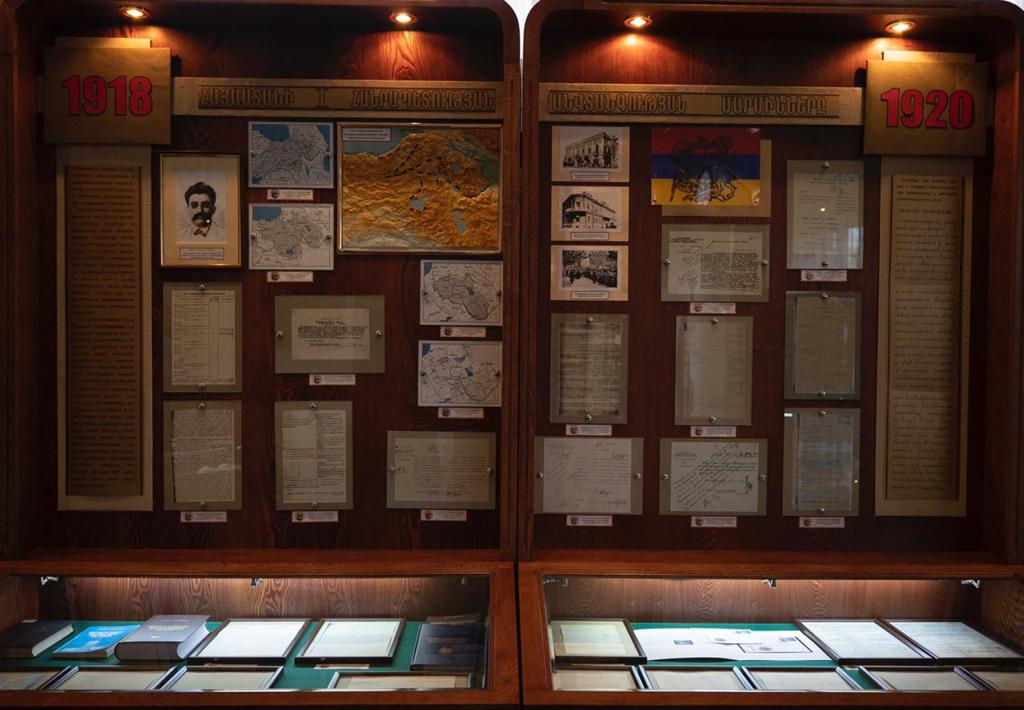 The development and activities (1918-1920) of the RA special services, particularly, the Intelligence and Counterintelligence divisions of the General Staff of the RA Military Ministry, are presented in the showcase entitled ‘Security Agencies of the First Republic of Armenia.’ A wide-ranging collection of documents is displayed, viewing, that despite difficult geopolitical, financial-economic, and military situation in the country, a extensive work has been carried out and a great amount of information comprehensively describing the regional situation has been collected by the division which had scarce human resources.
The development and activities (1918-1920) of the RA special services, particularly, the Intelligence and Counterintelligence divisions of the General Staff of the RA Military Ministry, are presented in the showcase entitled ‘Security Agencies of the First Republic of Armenia.’ A wide-ranging collection of documents is displayed, viewing, that despite difficult geopolitical, financial-economic, and military situation in the country, a extensive work has been carried out and a great amount of information comprehensively describing the regional situation has been collected by the division which had scarce human resources.
 The showcase entitled ‘The Development and Activities of the Security Agencies of Soviet Armenia’ illustrates the creation and activities of the state security forces of the Armenian Soviet Socialist Republic in the period of 1920-1988. Remarkable archive documents, photos, samples of weapons captured during operational and intelligence activities, spyware detection tools, and materials related to highly publicized criminal cases are displayed.
The showcase entitled ‘The Development and Activities of the Security Agencies of Soviet Armenia’ illustrates the creation and activities of the state security forces of the Armenian Soviet Socialist Republic in the period of 1920-1988. Remarkable archive documents, photos, samples of weapons captured during operational and intelligence activities, spyware detection tools, and materials related to highly publicized criminal cases are displayed.
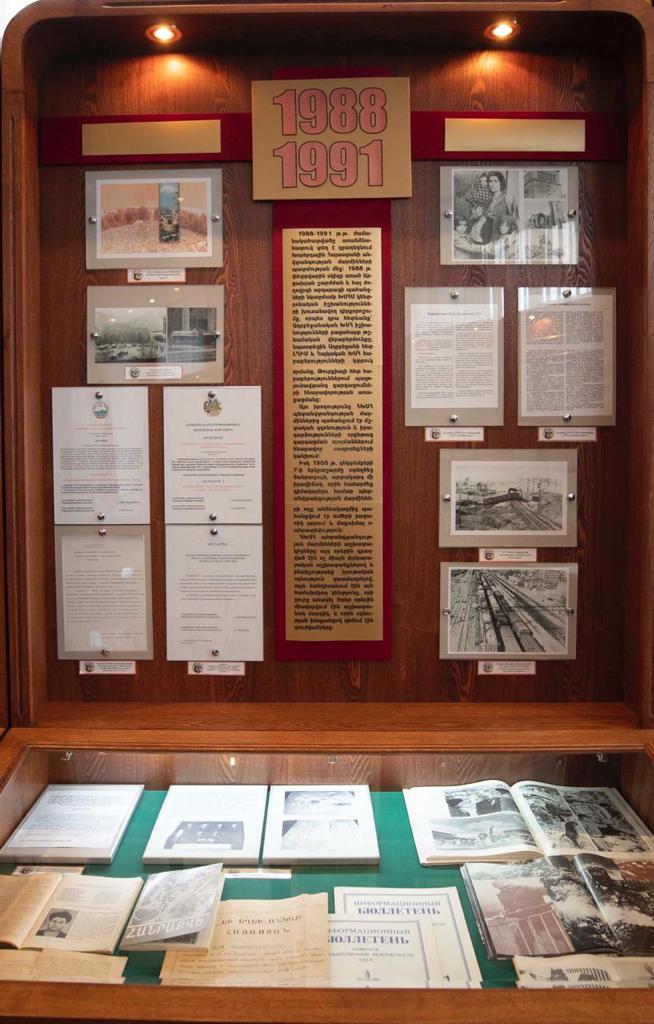 The showcase entitled ‘The Development and Activities of the Security Authorities of the Soviet Armenia in the Period of 1988-1991’ presents the participation of the state security officers in the rescue and coordination activities after the earthquake in Spitak. The documents and photos related to the Karabakh movement and tragic events of Sumgait are also displayed.
The showcase entitled ‘The Development and Activities of the Security Authorities of the Soviet Armenia in the Period of 1988-1991’ presents the participation of the state security officers in the rescue and coordination activities after the earthquake in Spitak. The documents and photos related to the Karabakh movement and tragic events of Sumgait are also displayed.
 The showcases entitled ‘From the Contemporary History of Intelligence and Counterintelligence’ are devoted to the formation and activities of the National Security Agencies of RA – Intelligence, Counterintelligence and Military Counterintelligence Agencies, in particular,- after the proclamation of independence of Armenia, on September 21, 1991. The participation of the national security officers in Artsakh war is also presented here. Archive documents, photos, materials on notable criminal cases of the recent decades connected with state treason, espionage, illegal purchase and sale of radioactive materials, counterfeit money circulation and smuggling are displayed, too.
The showcases entitled ‘From the Contemporary History of Intelligence and Counterintelligence’ are devoted to the formation and activities of the National Security Agencies of RA – Intelligence, Counterintelligence and Military Counterintelligence Agencies, in particular,- after the proclamation of independence of Armenia, on September 21, 1991. The participation of the national security officers in Artsakh war is also presented here. Archive documents, photos, materials on notable criminal cases of the recent decades connected with state treason, espionage, illegal purchase and sale of radioactive materials, counterfeit money circulation and smuggling are displayed, too.
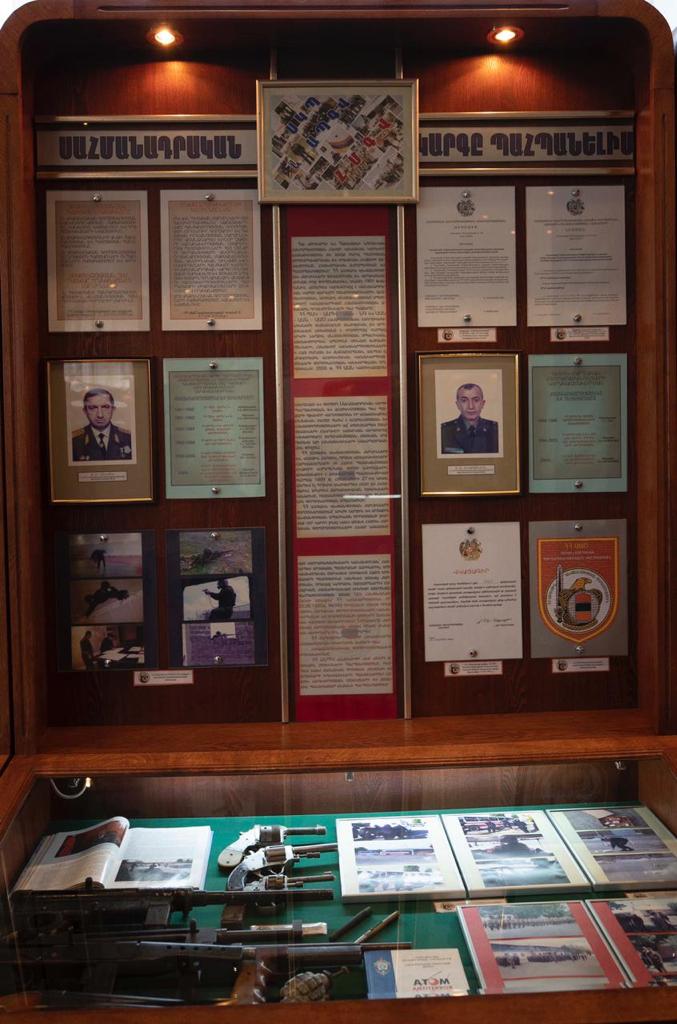 The showcase entitled “Protecting the Constitutional Order” presents the history of the development and activities of the General Directorate for Protection of Constitutional Order and Fight against Terrorism and of “A” unit, which carries out operational and combat activities. Samples of factory-made and improvised weapons that were captured in the result of the activities of the mentioned unit, as well as the photos of training exercises are displayed.
The showcase entitled “Protecting the Constitutional Order” presents the history of the development and activities of the General Directorate for Protection of Constitutional Order and Fight against Terrorism and of “A” unit, which carries out operational and combat activities. Samples of factory-made and improvised weapons that were captured in the result of the activities of the mentioned unit, as well as the photos of training exercises are displayed.
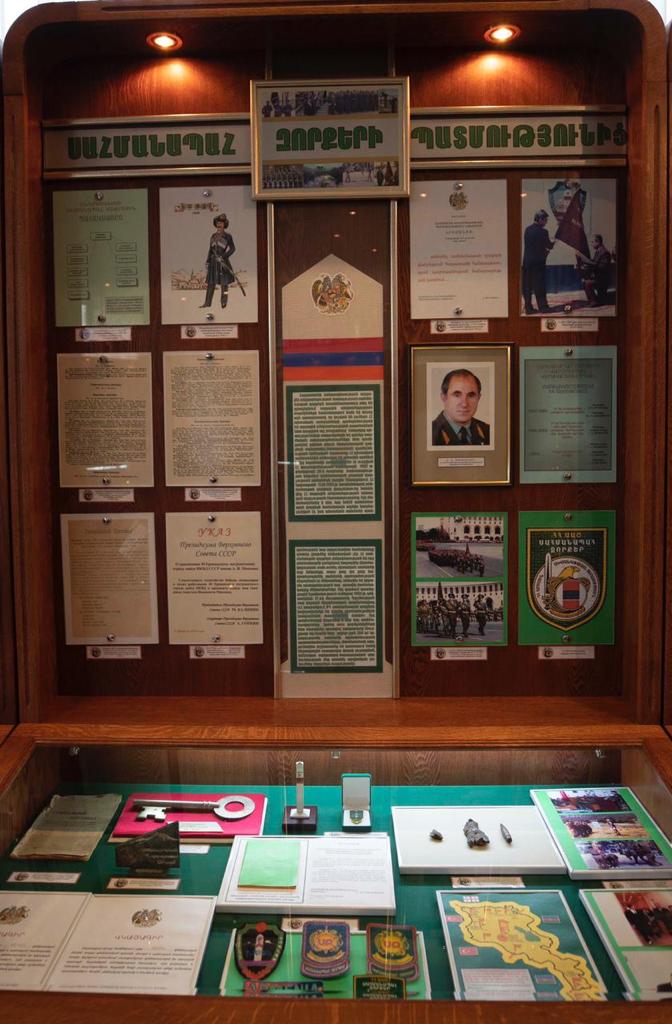 Materials illustrating the activities of the Border Guard Troops, the photos of training exercises and the photos of the opening ceremony of the Training Center, as well as souvenirs transferred from the border outposts are displayed in the showcase entitled ‘From the History of the Border Guard Troops.’
Materials illustrating the activities of the Border Guard Troops, the photos of training exercises and the photos of the opening ceremony of the Training Center, as well as souvenirs transferred from the border outposts are displayed in the showcase entitled ‘From the History of the Border Guard Troops.’
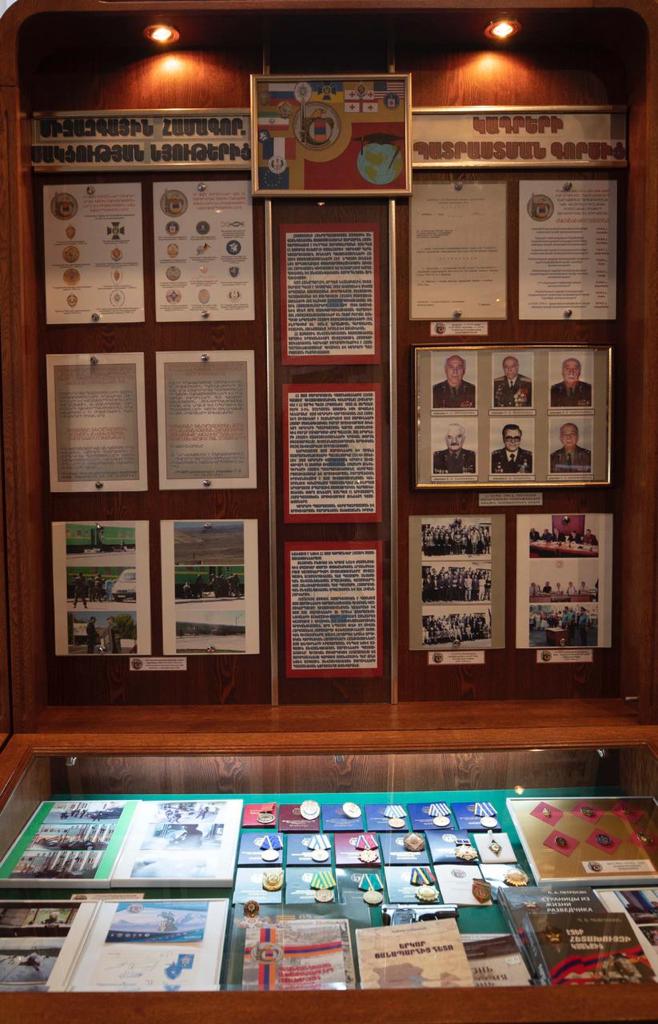 In the showcase entitled ‘Some Materials on International Cooperation’ and ‘From the Contemporary History of Staff Training and Scientific-Educational Activities’, the photos from various meetings with partner special services are displayed, and the history of the creation of the Scientific and Educational Center is presented. Departmental rewards (samples of medals and award pins), examples of memoirs of the veterans of NSS, as well as their personal items offered to the museum, are displayed.
In the showcase entitled ‘Some Materials on International Cooperation’ and ‘From the Contemporary History of Staff Training and Scientific-Educational Activities’, the photos from various meetings with partner special services are displayed, and the history of the creation of the Scientific and Educational Center is presented. Departmental rewards (samples of medals and award pins), examples of memoirs of the veterans of NSS, as well as their personal items offered to the museum, are displayed.
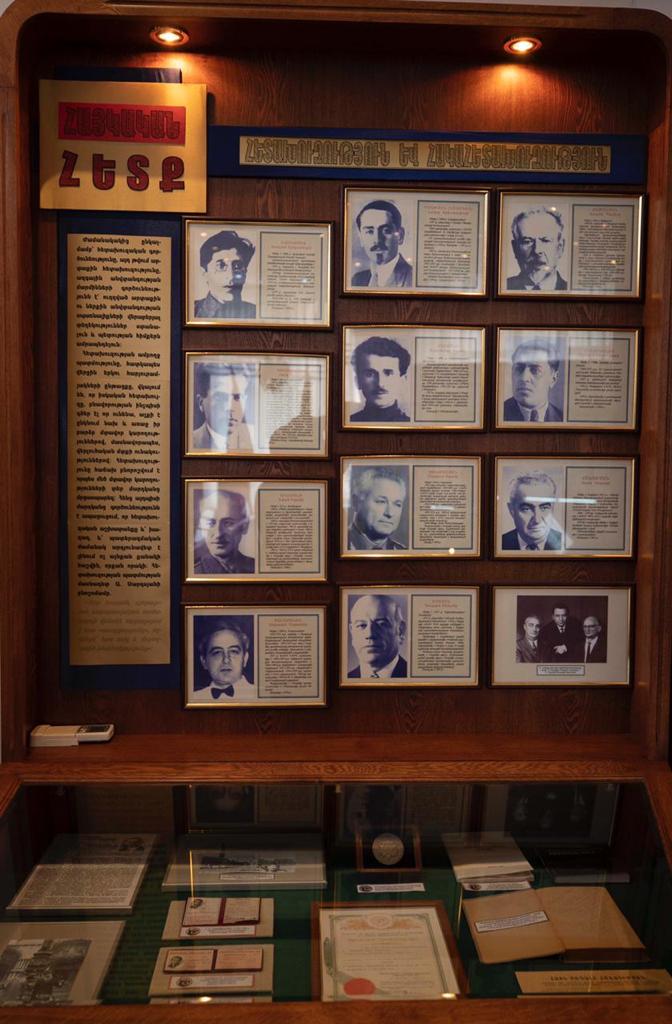 The showcase entitled ‘Intelligence and Counterintelligence: Armenian trace’ is devoted to the outstanding intelligence and counterintelligence officers of Armenian descent in the Soviet years; photos, biographies, personal items and documents of the above mentioned officers are presented. The activities of Gevorg Vardanyan, a hero of the Soviet Union, and Gohar Vardanyan, his wife, are presented separately. Personal items that were used during 46 years of intelligence activities and later donated to the museum by the Vardanyans are also displayed in the showcase.
The showcase entitled ‘Intelligence and Counterintelligence: Armenian trace’ is devoted to the outstanding intelligence and counterintelligence officers of Armenian descent in the Soviet years; photos, biographies, personal items and documents of the above mentioned officers are presented. The activities of Gevorg Vardanyan, a hero of the Soviet Union, and Gohar Vardanyan, his wife, are presented separately. Personal items that were used during 46 years of intelligence activities and later donated to the museum by the Vardanyans are also displayed in the showcase.
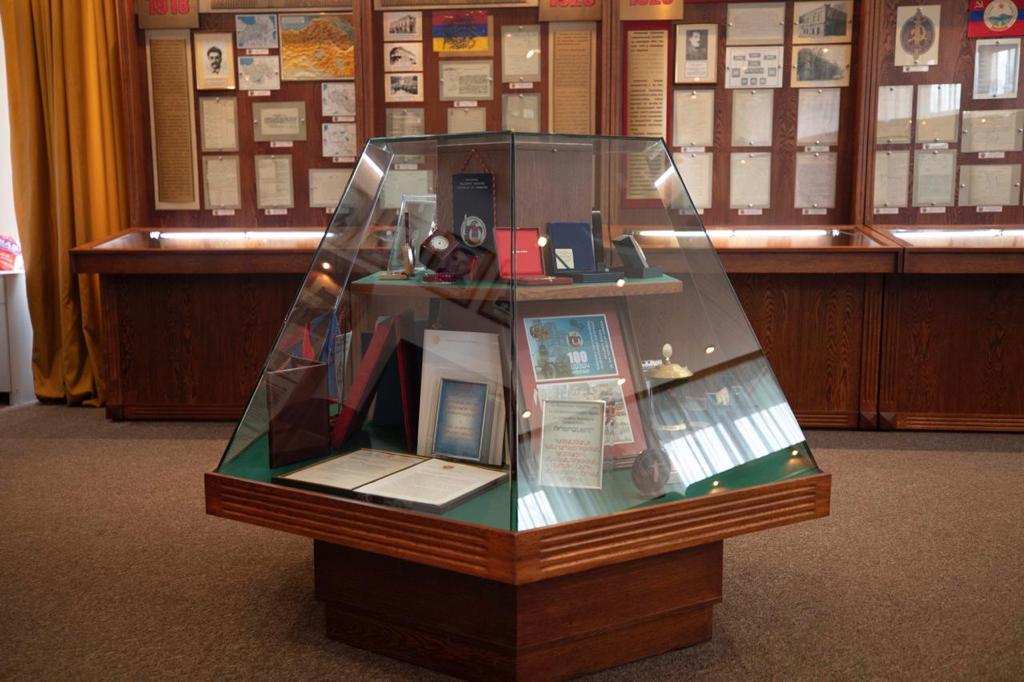 Souvenirs, valuable items, honorary certificates, letters of appreciation and congratulatory letters from various events and meetings are displayed in the showcase entitled ‘From the Materials of the Solemn Events and International Meetings’.
Souvenirs, valuable items, honorary certificates, letters of appreciation and congratulatory letters from various events and meetings are displayed in the showcase entitled ‘From the Materials of the Solemn Events and International Meetings’.
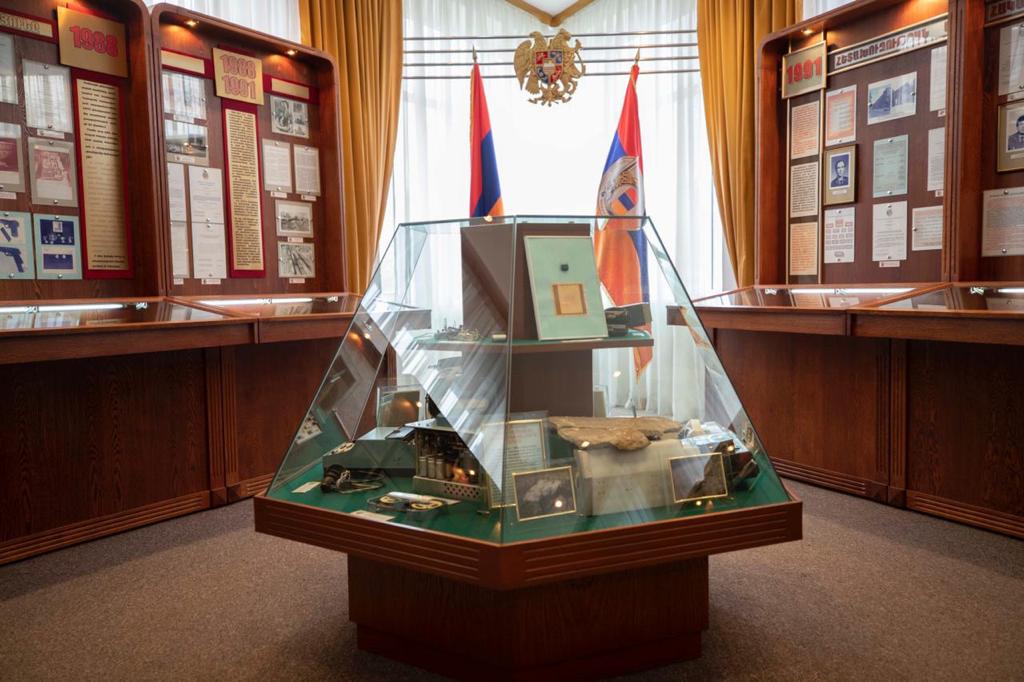 Operational and technical means – equipment for taking photos and video recording, phones, encryption and decryption appliances, etc., mainly used during the Soviet years by the above-mentioned units, are displayed in the showcase entitled ‘From the History of Operational and Technical Units.’
Operational and technical means – equipment for taking photos and video recording, phones, encryption and decryption appliances, etc., mainly used during the Soviet years by the above-mentioned units, are displayed in the showcase entitled ‘From the History of Operational and Technical Units.’